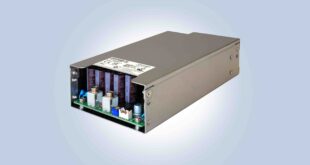All the way back in 1860, Abraham Lincoln referred to the potential of wind power. “Of all the forces of nature, I should think the wind contains the largest amount of motive power,” he said. Now, wind turbines are running across the globe, generating renewable energy for millions. But what keeps them going? Andrew Keith reports
As the world increasingly shifts towards renewable energies in attempts to meet sustainability targets, wind farm adoption is seeing an uptake. In 2022, more than 3.5 GW of new wind capacity was added in the UK, providing power to more than 3.4 million homes.
But wind turbines have a big problem – downtime. Electrical and generator failures are among the top contributing factors to wind turbine failure. Though generators fail less often than other components, such as the cooling and hydraulics system, they often have more severe consequences when things go wrong.
Such failures can be costly, and those that require more significant repair work can take time to fix. So, what can we do to stop this from happening?
Testing turbines
To help protect against electric-related failures, implementing a rigorous testing programme is essential. Before turbines can be connected to the grid, they must be assessed to ensure they can safely handle and produce the loads promised. The unpredictability of natural sources means power production at wind farms is rarely constant, so systems must be tested comprehensively to ensure they can deal with these fluctuations.
Validating the wind farm is also important in obtaining the relevant warranties and certifications. These ensure that the wind farm meets a certain level of quality and safety, and is compliant with local regulations – a necessary step in getting systems online and to prove to investors and owners that their wind farm will succeed.
But testing shouldn’t stop once the system has been proven. Regular testing must be carried out throughout the lifespan of the wind turbine. Identifying potential malfunctions quickly means they can be rectified before a more serious fault develops, which becomes even more important when the turbine is in a hard-to-access location, such as those far offshore.
Powering protection
Many offshore wind turbines are installed alongside a small diesel generator to provide auxiliary power. When it comes to large-scale wind farms, equipment installation may take several months or even years to complete. This can mean that some equipment is left stagnant, awaiting connection to the grid. But leaving a wind turbine stationary for extended periods of time, whether due to installations or weather conditions, can lead to system damage.
Condensation can develop within the mast, damaging the electrical circuitry and increasing the risk of failure. The bearings can also deform, leading to a sub-optimal performance when the turbine is finally brought online. In such cases, these small generators provide sufficient power to keep the turbines moving just enough to avoid any permanent damage.
But how exactly can we test the functionality of the turbines and their generators?
Load banks
Load banks are used to validate a wind farm’s functionality. These simulate the expected electrical load that the system will need to operate under, without having to connect the equipment directly to its normal operating load. This allows for comprehensive testing while eliminating the risk of damage to the rest of the farm’s infrastructure.
The challenge, therefore, is finding load banks suitable of handling power levels representative of those that will be generated by the wind farm. Power Prove supplies even the most demanding of applications with load bank solutions to suit.
Lincoln was right – wind power continues to show dizzying potential in the energy mix. Though it can be tempting to rush through testing processes to get systems commissioned as quickly as possible, taking shortcuts can lead to expensive failures down the line. Combining regular testing with routine maintenance helps to extend the turbines’ lifetime, enabling the production of clean, green energy for many years to come.
Andrew Keith is a director of load bank manufacturer Power Prove.
 Engineer News Network The ultimate online news and information resource for today’s engineer
Engineer News Network The ultimate online news and information resource for today’s engineer




